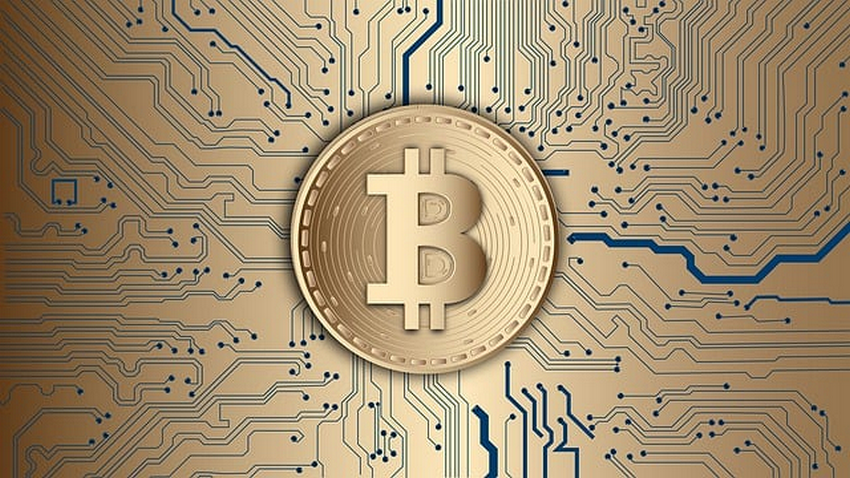A new player has entered the complex world of contemporary finance, and they are shaking up long-held ideas about money, transactions, and economic systems. The original cryptocurrency, Bitcoin, and the blockchain technology that underpins it are at the vanguard of this transformation. An in-depth look at how Bitcoin and blockchain technology have changed the financial world, “Navigating the Blockchain: Bitcoin’s Impact on Finance” reveals how this distributed ledger is changing our perception of and interactions with money.
Part 1: Where Blockchain and Bitcoin Came From
One must investigate Bitcoin’s origins and the groundbreaking technology that underpins it, blockchain, in order to comprehend the influence of Bitcoin on the financial sector. This chapter delves into the origins of Bitcoin, examining the enigmatic Satoshi Nakamoto and explaining the basic concepts of blockchain technology. The technology’s decentralized nature, consensus procedures, and cryptography’s function in transaction security will all be explained to readers.
Section 2: Blockchain Fundamentals
Bitcoin and several other cryptocurrencies rely on blockchain technology. In this chapter, the inner workings of blockchain are examined, revealing the steps taken to validate transactions, add them to the ledger, and ensure their security using cryptographic concepts. Readers will come to value the security and transparency that blockchain brings to the financial sector as they understand how this distributed and immutable ledger operates.
Bitcoin, the Third Chapter: A Digital Gold Store with a Limited Supply
Bitcoin, with its limited quantity and decentralized character, arises as a digital alternative to traditional assets like gold, which have long been considered as store of value. This chapter delves into the story of Bitcoin as “digital gold,” examining its decentralization, longevity, and role as a protection against inflation. Learn how Bitcoin stands out from the crowd and why it could be a hedge against economic uncertainty by delving into its distinctive qualities.
Part 4: How Bitcoin is Changing the Face of Conventional Banking
Conventional financial institutions face threats and opportunities from the growing popularity of Bitcoin. In this chapter, we will explore how Bitcoin’s decentralized structure poses a threat to conventional institutions. Readers will delve into the ways Bitcoin challenges conventional banking models and promotes financial inclusion by giving those without or with limited access to traditional banking services a chance to participate, covering topics such as disintermediation and the possible transformation of the remittance business.
Chapter 5: Opening Doors to the Crypto World: Cryptocurrency Exchanges
To find your way around the blockchain, you need to be familiar with the exchanges, which are the entry points to the bitcoin world. This chapter delves into the history of cryptocurrency exchanges, how they work to facilitate Bitcoin transactions, and the advantages and disadvantages of these platforms. Readers will acquire knowledge about the inner workings of various platforms, both central and decentralised, and how they affect the accessibility and liquidity of Bitcoin.
The Uncertainty of the Regulatory Landscape (Chapter 6)
As Bitcoin continues to gain popularity, authorities worldwide are faced with the difficult task of developing regulations that can effectively combine innovation with the need to safeguard investors. From nations that are enthusiastic about and actively using cryptocurrency to those that are skeptical and have implemented stringent laws, this chapter looks at the changing regulatory landscape. In this article, readers will learn about the possibilities and threats that Bitcoin faces in the intricate global financial system from a legal perspective.
Section 7: Bitcoin and the Development of Modern Payment Methods
Beyond its use as a store of money, Bitcoin has far-reaching implications in the payment system. In this chapter, we trace the history of money from its origins in conventional fiat currency to its eventual digital replacement, Bitcoin. Learn about the pros and cons of Bitcoin transactions, the latest innovations in digital currencies issued by central banks (CBDCs), and payment methods in general.
Section 8: Decentralized Finance (DeFi) and Smart Contracts
Bitcoin’s influence on the financial sector is far-reaching, touching not just the domain of digital currency but also that of smart contracts and decentralized financing (DeFi). In this chapter, we will explore the ways in which blockchain technology facilitates decentralized financial applications and programmable contracts. As a result of this article, readers will have a better understanding of how DeFi may eliminate middlemen from financial transactions and so transform borrowing, lending, and trading.
Section 9: Bitcoin and the Spread to Institutions
Institutional investors are flooding into the Bitcoin market as it develops. In this chapter, we’ll look at how Bitcoin is becoming more widely used by institutions, from large companies including Coinbase and Square to new investment products like Bitcoin exchange-traded funds (ETFs). The credibility of Bitcoin and its incorporation into conventional financial portfolios are affected by institutional involvement, which readers will learn about.
Section 10: Bitcoin’s Unknown Future Vedic Paths
Exploring new territory and possible routes is an integral part of learning the blockchain. Taking into account aspects like scalability, technical progress, and social acceptability, this chapter makes predictions about the future of blockchain technology and Bitcoin. The potential for Bitcoin to become a widely used currency, the use of blockchain technology in different sectors, and the far-reaching effects on the future of money are all things that readers will think about.
In sum:
The article “Navigating the Blockchain: Bitcoin’s Impact on Finance” gives evidence of how blockchain technology and Bitcoin can revolutionize the financial sector. Given the ongoing decentralized revolution, readers who have read this extensive examination will be more ready to deal with the ever-changing world of cryptocurrencies, blockchain applications, and the significant developments that will impact global finance in the future. Bitcoin is having an effect on the world of finance now, but it is also inspiring people to think about what the future holds.
